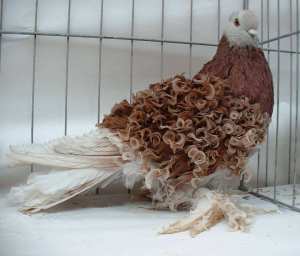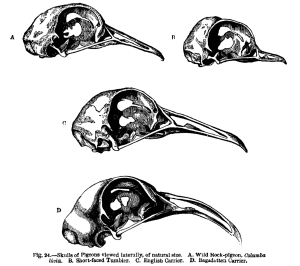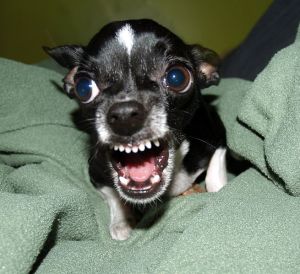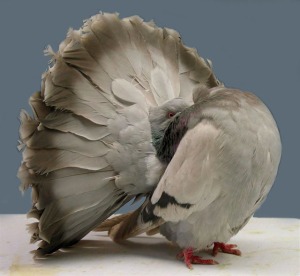If you’ve read “On the Origin of Species”, you’ll know that Darwin had a thing for pigeons. The astonishing variety of breeds provided a perfect model organism for him to present his ideas on variation. Darwin (as well as most naturalists at the time) suspected that all breeds of domestic fancy pigeons were descendants of the rock dove (Columba livia). The degree of variation present between these breeds is so marked that Darwin suggests an ornithologist would believe them to be separate species: “Altogether at least a score of pigeons might be chosen, which if shown to an ornithologist, and he were told that they were wild birds, would certainly, I think, be ranked by him as well-defined species.”
Darwin’s studies on pigeons serve to illustrate the extent to which animals can be shaped by selection for a particular trait. Under domestic conditions we humans act as the selective pressure. Most domesticated vegetables are larger than their wild ancestors because we tend to sow seeds from the largest individuals. The offspring produced are likely to be large like their parents, as will the neighbouring plants with which they may breed, compounding the effect over generations.
An individual species can be shaped into countless forms, depending on the desired traits. All dogs, for example, are descended from grey wolves. Under domestication they performed different tasks and were selectively bred to improve their ability to perform those tasks. Greyhounds were bred for speed, Collies were bred for shepherding and Chihuahuas were bred primarily as a companion animal for mentally deficient socialites.
Darwin believed that this observed variation would occur in nature as well, though the selective pressures would be very different. This subtle variation is well preserved in the evolutionary history of polar bears(Ursus maritimus), which are descended from brown bears(Ursus arctos). These bears likely evolved from populations of brown bears that became isolated by glaciation. The resultant morphological changes were “selected” by the environment in which the bears now had to live. The most obvious of these changes is the white coat, which would prove to be an obvious advantage to a predator trying to disguise itself in arctic conditions.

No, that’s not a perm Credit: http://www.darwinspigeons.com
Back to the topic at hand; why have I been cooing (I know, I’m sorry) over pigeons? Well, as useful as the pigeon experiments were in showing how one ancestral form can give rise to countless new varieties, it did require its proponents to take something of a leap of faith when it came to the assumption that all breeds of fancy pigeon were descendants of the rock pigeon. Because Darwin didn’t have access to today’s technologies (not that he’d know what to do with them if he did), there has been very little genetic evidence to back up his assumptions. Until now…
A study recently published in Science provides strong evidence to support the theory. Researchers sequenced the genomes of 36 domestic pigeon breeds as well as those of two feral pigeons. Analysis of the genomes revealed that all breeds suspected to have descended from the rock dove are more closely related to each other than they are to the closely related hill pigeon(Columba rupestris).Team leader Mike Shapiro, of the University of Utah, had this to say of the historical significance of the study, “…Pigeons played an important role in the history of evolutionary biology. Charles Darwin was a true pigeon aficionado, and used the example of dramatic variation among pigeon breeds to communicate his ideas about how selection works in the wild. With our new study and other on-going work like it, we’re now starting to understand the DNA mutations that control this anatomical variation.”
Despite Darwin’s reputation as a pigeon fancier, it would appear that many pigeons do not appreciate their ancestors’ coercion into scientific research, as evidenced by their dirty protests on a statue of him erected at Shrewsbury.
Sources:




